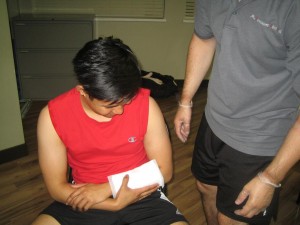An open wound is basically an injury that can involve either an external or internal break in the bodily tissue, typically the skin. Almost every individual has experienced an open wound. Take note that majority of open wounds are minor and can be easily treated by first aid measures at home.

The common causes of open wounds include falls, vehicular accidents and using sharp objects. In case an open wound involves profuse bleeding or it lasts for more than 20 minutes, it is best to call emergency assistance right away.
Types of open wounds
There are various types of open wounds that are categorized based on their cause.
- Incision – caused by sharp objects such as knives, razor blades or shards of glass. An incision typically bleeds profusely and quickly. In case an incision is deep, there is likelihood that the tendons, muscles and ligaments are damaged.
- Abrasion – occurs once the skin scrapes or rubs against a hard or rough surface. An abrasion does not cause a lot of bleeding but the wound should be cleaned and scrubbed to avoid the occurrence of infection.
- Puncture – caused by pointed and long objects such as needles, nails or an ice pick. A puncture is a small-sized injury on the skin and do not bleed a lot, but can be deep enough to cause damage to the internal organs. In some cases, a bullet can also cause a puncture wound. Even for a small puncture wound, it is best to visit a doctor to receive a tetanus booster as well as prevent infection.
- Avulsion – it can be a partial or complete tearing away of the skin and tissues that bleeds profusely and quickly. This occurs during accidents such as explosions, crushing accidents or gunshots.
- Laceration – often caused by accidents involving machinery and tools. A laceration is a jagged or irregular break or tearing on the skin that bleeds quickly and heavily.
Treatment for open wounds
Majority of open wounds are minor, thus they can be easily treated with the following first aid steps at home.
- Wash and clean the wound in order to eliminate debris and dirt present
- Apply direct pressure and elevate to control the swelling and bleeding
- Cover the wound
- Maintain the cleanliness and dryness of the wound for 5 days
- Rest if possible
- Take over-the-counter medications for pain relief
- Apply ice if swelling or bruising is present
- Avoid picking on the scabs
- Apply sunscreen with SPF 30 on the affected area until wound is completely healed
It is best to consult a doctor if:
- The bleeding does not stop even if direct pressure is applied and lasts longer than 20 minutes
- The open wound is deeper than a half inch
- The bleeding is due to a serious accident
Always remember to wash your hands thoroughly when performing first aid care for wounds. It is best to work on a clean surface when changing the dressings or bandages. The wound should be disinfected and dry it properly before applying new dressings. The soiled dressing and bandages should be disposed in a plastic bag.
